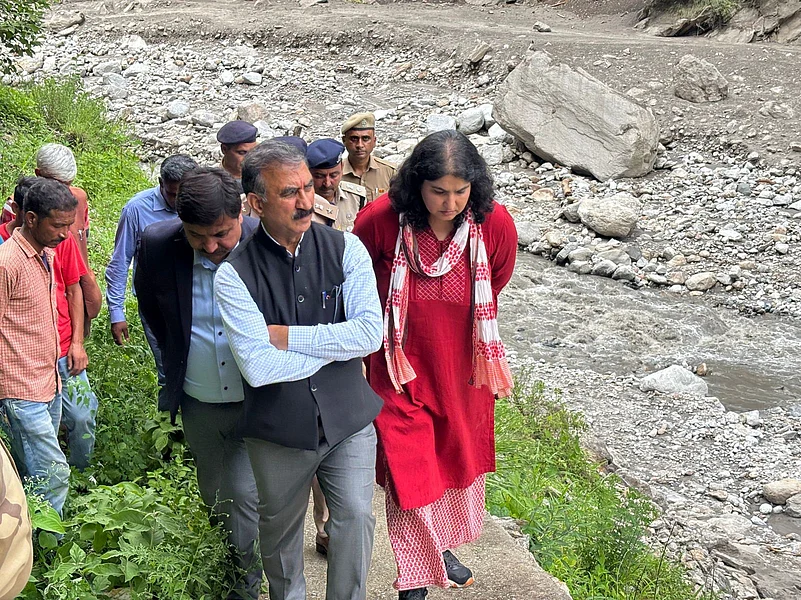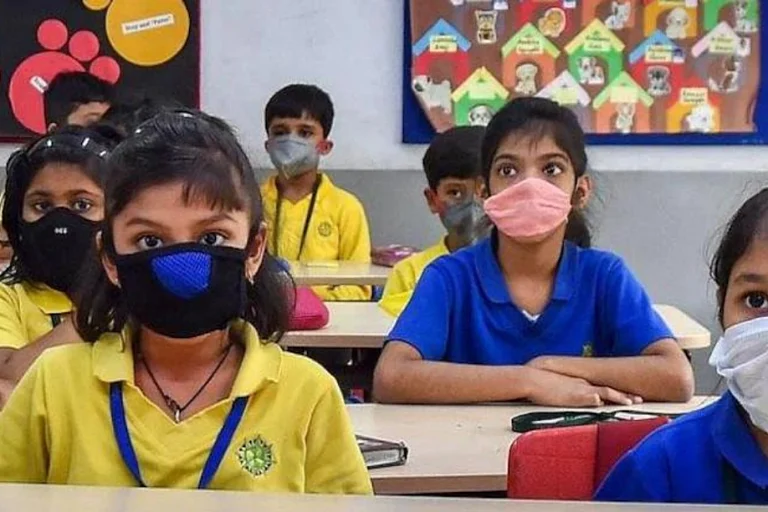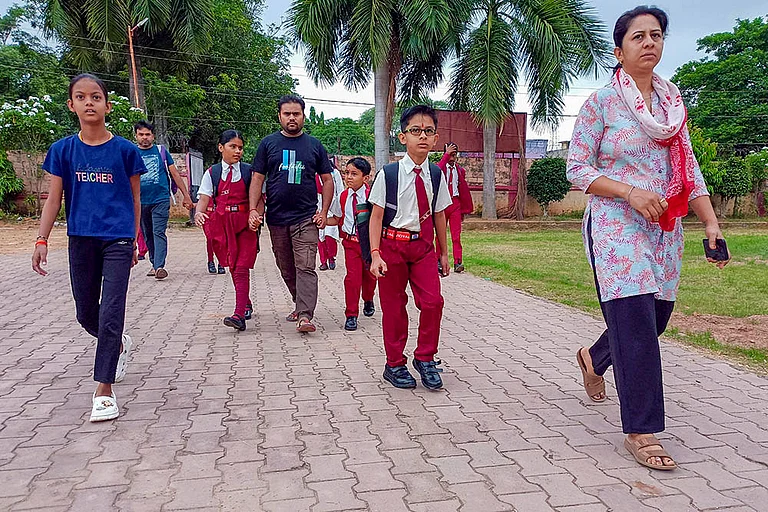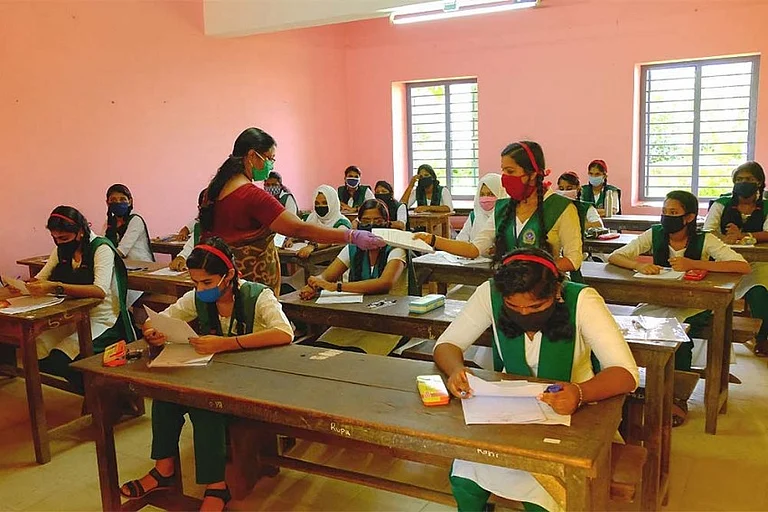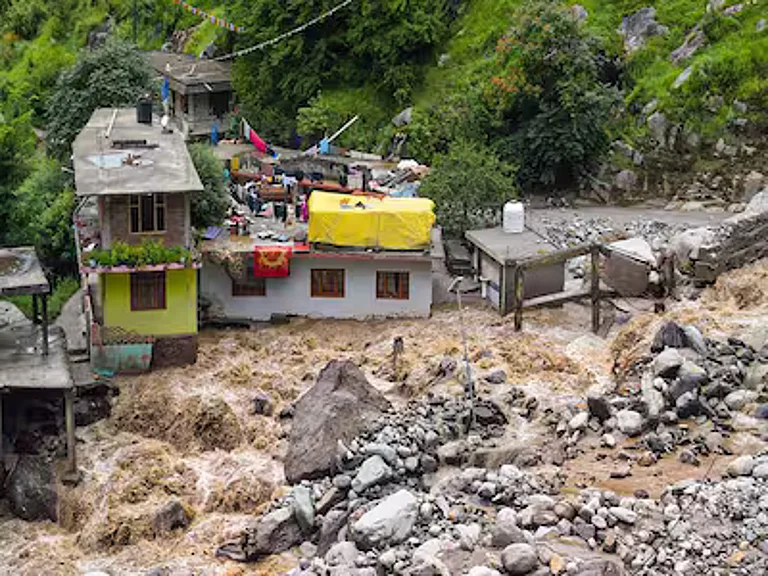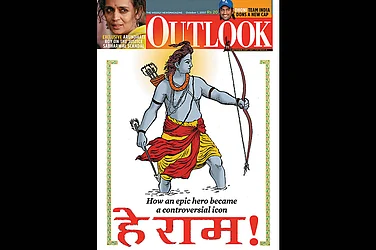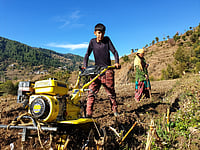"Uncle, Radhika didi, Aarushi, and Ritika nahi mil rahe (cannot be found)," pleaded grief-stricken cloudburst survivors, voices trembling with despair. They are schoolmates of the eight missing children from Government Senior Secondary School Samej, located 145 km from Shimla, the state capital, which has been devastated by the heavy rain.
The survivors of the devastating cloudburst that erased Samej village including the school on Wednesday midnight, were heard desperately seeking the Chief Minister Sukhwinder Singh’s assistance to locate their missing schoolmates, amid the ongoing crisis.
Among 33 other residents who are missing, 15 belong to one family and of those 15, eight are school children, six of them girls. Amidst heart-wrenching scenes and screams of women survivors, Chief Minister broke the protocol and embraced the school children as he reached out to the families to share their pains inflicted by nature's fury.
Kartik Thakur, an eighth-class student, stepped forward with five others, to tell Chief Minister "Uncle, my friends Arun, Aarushi, Ritika, and Radhika didi are all missing. They must be buried down in the muck or may have got washed away in storm that cloudburst caused on ill-fated night.”
Of those missing-- Radhika ‘Didi’ as children recalled, was the most beloved person, a darling of everyone in the school. Radhika was a charming figure among her peers and had been an inspiration and a source of comfort. "She tutored us and helped with our homework. She was always available for any help, also after the school hours.
"There has been no trace of her," a group of children - Rakhi, Arnav, and Ashwini - have been tirelessly looking for Radhika didi. The Chief Minister said “we are doing our best to find each one. Let’s pray for them. And, don’t worry about the school, we will construct a better one soon”.
Recounting the tragedy, Kartik recalled that he and his family were at home during the cloudburst that fateful night. There was widespread panic and chaos as the village was inundated with water, and no one knew what would happen to them next moment. Nobody could sleep. The villagers had to leave their homes, and spend the night at a local temple.
By morning, it was only a trail of destruction with members of almost every family missing. When they reached the school, they discovered that the lower floor was completely submerged in mud and slush. Everything had been washed away, and the only object that drew attention was a trophy won by three students—Rikita, Radhika, and Anjali—in an inter-school sporting event. The trophy was a poignant reminder of the winners, who were no longer there. The suffering and agony of families impacted by the cloud burst and subsequent floods in Samej Khad, on the Shimla-Kullu border, remains intense and unyielding, even after 72 hours of the tragedy and massive rescue operation. There is still no trace of the 33 people still missing. So, far only eight bodies have been found.
Bakshi Kedarta, 60, was struggling to overcome emotions as he lost 16 family members including his daughter Kalpana and her two kids — a seven-year-old daughter and and a four-year-old son. His eyes filled with tears as he recounted that he had spoken with his daughter just three days before the disaster.
Bakshi described the devastation as beyond anything he had ever witnessed. Anita, another survivor, shared her harrowing experience: on the night of the incident, she was asleep when her house shook violently around 12:30 am. Hearing ominous noises outside, she fled with her children to a nearby temple, where they spent the night. Upon returning in the morning, she found that everything had been destroyed.
With monsoon rains just having started, Himachal Pradesh has got plunged into terrible times with apprehensions of weather-related disasters, cloudbursts and landslides creating havoc once again as had happened during the 2023 floods. But, with multiple cloudbursts happening within the last week in Shimla and Kullu districts, the environmental scientists are attributing the frequency of such occurrences to changing weather patterns in the hills, and rising heat, during the summers.
Anil Kant, whose hotel at Tosh in Kullu, was first to get hit by the cloudburst late last month said, “it’s strange, there is no monsoon rain but repetitive clouds are posing far greater threat to the human habitations and infrastructure than rains."
Kant has suffered a loss of upto Rs 45 lakh as staff at the hotel had a providential escape. But now the extreme weather events are becoming frequent and leading to significant losses, including flash floods, landslides, and extensive damage to infrastructure such as roads, bridges, and homes.
The cloud bursts are not a new phenomenon in the mountains of Himachal Pradesh and Uttarakhand as these primarily occur in the areas where warm air currents rise from the ground, carrying raindrops back up towards the clouds. This process causes fall of rain with high intensity, leading to extensive condensation within the clouds. Consequently, a significant amount of water accumulates at higher altitudes. The warm air currents from below restrict the fall of water. When these upward currents weaken, the accumulated water falls rapidly in a concentrated area.
Suresh Attri, principal scientist at HP government’s Department of Science, Technology and Environment says, “Cloudbursts typically occur at elevations between 1,000 and 3,000 metres normally above sea level, driven by the upward movement of air and the resulting condensation within the clouds. So it is clearly connected with the changing climate due to global warming."
Climate change, he says, also amplifies the frequency and intensity of cloudbursts by increasing atmospheric moisture and altering weather patterns. Warmer temperatures lead to higher evaporation rates, resulting in more moisture in the atmosphere, which can cause heavier rainfall. Additionally, the intensified storm systems and shifts in global weather patterns due to climate change make cloudbursts more frequent and severe, particularly in mountainous regions already prone to such events.
This disruption of the natural water cycle contributes to the conditions necessary for cloudbursts, posing greater risks to affected areas, he explained. Cloudbursts are sudden and result in unprecedented heavy rainfall that is local and abrupt. Rainfall over 100 mm or 10 cm per hour over a region of 20 to 30 square km falls into this category.
Another expert Surjit Singh Randhawa, principal Scientist at HP Council for Science and Technology says “cloudbursts which have been happening in Kullu and Mandi districts of Himachal Pradesh can be attributed to several meteorological and geographical factors. Some of these include Intense Convective Activity (ICA). In this case warm, moist air rapidly rises, cools, and condenses, leading to the formation of heavy rain clouds. In mountainous regions like Himachal Pradesh, orographic lift can enhance this process."
The Cloudbursts are more common during monsoon season, typically from June to September, period due to the increased moisture and instability in the atmosphere. But of many factors, says Randhawa, “there is growing evidence that climate change is leading to more extreme weather events, including intense rainfall and cloudbursts. Warmer temperatures can hold more moisture, leading to heavier rainfall when the air cools and condenses.”
Large-scale construction coming up in the hills blocking the natural storm water channels (khads) or even on the banks of rivers and streams multiply the losses and fatalities in case of cloudbursts, floods and landslides. The Samej school building was also located at a highly vulnerable site, rather in the middle of the khad.






